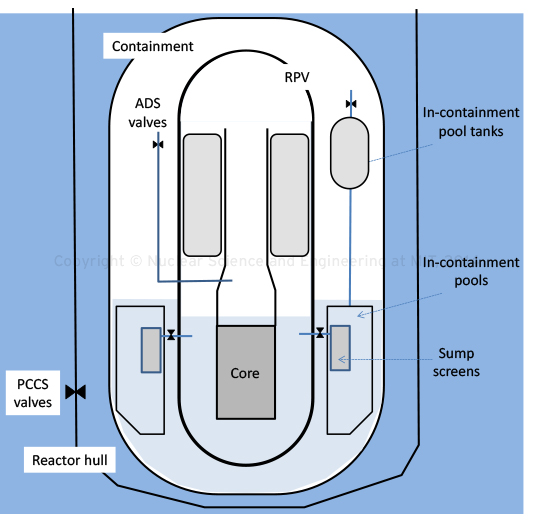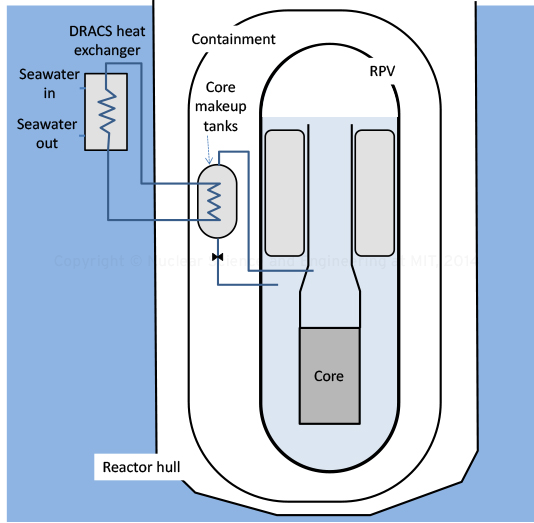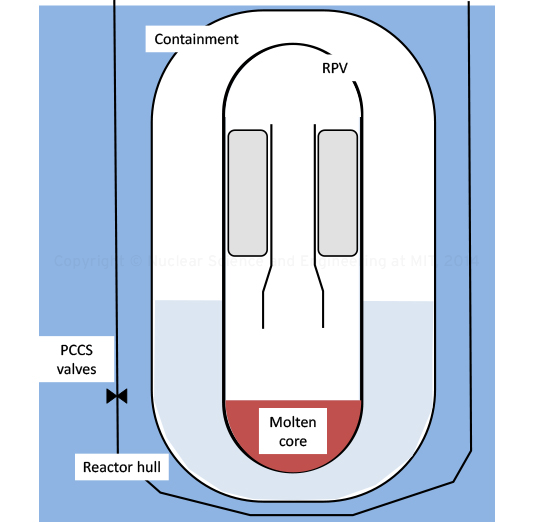...
For DBEs, the plant relies on the passive safety systems developed for terrestrial SMRs, but modified to take advantage of the underwater nuclear island design. Therefore, for decay heat removal given a DBE at operational pressures, there is a dedicated Direct Reactor Auxiliary Cooling System (DRACS) that is based on natural circulation from the Reactor Pressure Vessel (RPV) to an intermediate closed water loop and ultimately to seawater (see figure below). This system can function indefinitely without AC power or refilling of any tanks.
Decay heat removal for DBEs without RPV depressurization
...
The combined elimination of major accident precursors such as earthquakes and tsunamis, and a major accident such as the loss of ultimate heat sink accident should make the probability of core damage for the floating plant significantly lower than even the safest terrestrial plants. However, the principle of defense in depth mandates that the consequences of core damage be explicitly addressed in the design, as explained next.
Core and containment cooling in a post-LOCA situation
...
For postulated BDBEs, the fuel rods severely degrade resulting in a substantial amount of hydrogen generation and molten material (or corium). In this case, the objective is to eliminate any combustible gas hazards and allow the degraded core materials to attain a long-term coolable state. The floating plant strategy is to retain the corium inside the RPV, which is achieved by flooding the RPV cavity with containment water. This in-vessel retention strategy ensures that the thermo-mechanical loads on the containment remain low; moreover, given that the containment is initially under near-vacuum conditions, it would not be possible for hydrogen combustion to occur in a steam-inerted environment. As such, we expect to effectively eliminate the need for containment venting even in case of severe accidents.
In-vessel retention and cooling of corium during BDBEs
...
Finally, should containment venting become necessary for whatever unforeseen reasons, venting would be done directly underwater, which would reduce the radiation levels in the atmosphere and on land by orders of magnitude. As a result, it is likely the need for an evacuation zone could be eliminated, which would constitute a major advance in the social acceptability of nuclear power. Analysis of dispersion of radionuclides in the ocean and their effects on marine life is ongoing.


